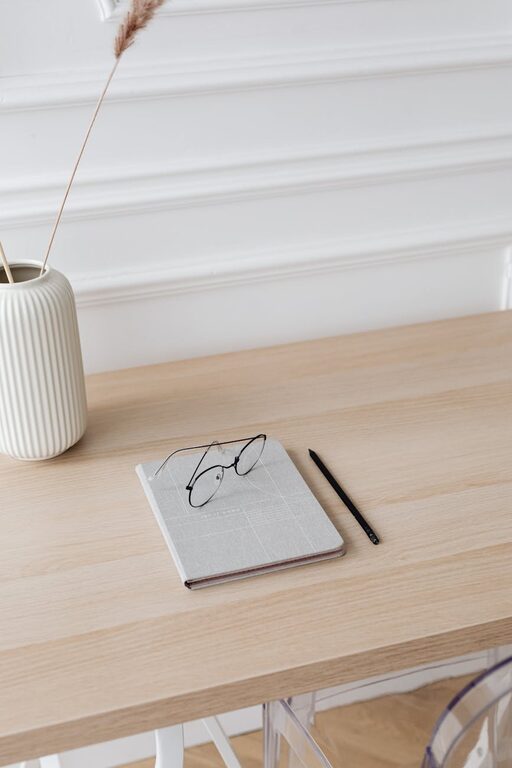Choosing the right notebook can make a big difference in how often you use it and how effective it is for your needs. Whether you’re jotting down daily to-dos, planning projects, or simply capturing ideas, a notebook that feels right will encourage you to write more consistently. But with so many options available, how do you pick one you’ll actually use? This guide will walk you through key factors to consider so that your new notebook becomes your favorite tool for creativity and organization.
Understand Your Purpose
Before diving into the styles and features, it’s essential to clarify why you want a notebook.
– Journaling or personal writing: Smooth paper and a size that’s easy to carry might be best.
– Work or school notes: Organized formats, like ruled lines or grids, can help keep thoughts clear.
– Creative sketching: Consider blank pages or heavy paper suitable for various media.
– Planning and organizing: Look for specialized layouts such as planners or bullet journal-friendly dot grids.
Knowing your primary use will narrow down the types of notebooks to explore.
Choose the Right Size and Portability
Notebooks come in all shapes and sizes, so think about where you’ll use yours most.
– Pocket-sized (A6 or smaller): Great for quick notes on the go but limited in space.
– Medium-sized (A5): Popular size, balancing ample writing space with portability.
– Large-sized (A4 and above): Ideal for detailed sketches or extensive note-taking but less portable.
If you carry your notebook every day, a size that fits comfortably in your bag or backpack is crucial.
Decide on the Paper Type and Quality
The feel and quality of the paper affect your writing experience immensely.
– Weight (gsm): Heavier paper (e.g., 90-120 gsm) prevents ink bleed-through, ideal for fountain pens or markers. Lighter paper (around 70 gsm) is fine for pencil or ballpoint use.
– Texture: Smooth paper is often better for writing, while textured paper appeals to sketchers.
– Color: Traditional white or cream are most common; cream is softer on the eyes and preferred by many writers.
Testing a sample or reading reviews about a notebook’s paper quality can save you from disappointment.
Select the Binding Style
Binding affects how your notebook opens, lies flat, and endures long-term use.
– Spiral-bound: Lies flat and allows flipping pages easily, but spirals can get bent.
– Thread-sewn or stitched: Durable and often lays flat, excellent for longevity.
– Perfect-bound (glued): Sleek look but may not open flat as easily.
– Disc-bound: Flexible adding/removing pages but a bit bulkier.
Think about how you like to write—whether you prefer flipping through pages or laying them flat—and choose accordingly.
Consider the Page Layout
The internal page layout influences how you capture information.
– Lined: Ideal for writing essays, notes, or lists.
– Grid or graph: Great for technical notes, charts, or bullet journaling.
– Dot grid: Combines structure and flexibility, popular among planners.
– Blank: Perfect for sketches or freeform note-taking.
Select the format that aligns with your style and intended use.
Check Extra Features
Many notebooks offer extras that can enhance your writing experience.
– Bookmark ribbons: Help keep your place easily.
– Elastic closure bands: Secure your notebook when not in use.
– Inner pockets: Handy for storing receipts, notes, or stickers.
– Perforated pages: Allow you to tear out sheets neatly.
– Numbered pages or indexes: Useful for organized notebooks or bullet journals.
These features are not essential, but can be very convenient depending on your habits.
Set a Budget
Notebooks can range from budget-friendly options to luxury editions costing well over $50. Think about how much you’re willing to invest.
– Basic notebooks: Affordable and often available in bulk.
– Mid-range: Balanced quality paper and durable bindings.
– Premium: High-end materials, artisanal craftsmanship, or branded collections.
Remember, investing in a notebook you truly enjoy using can be worth the extra cost.
Test Before Committing
If possible, visit a stationery store or ask friends for their favorite notebooks. Feeling the notebook’s weight, flipping through pages, and testing the paper with your regular pen can help you make confident decisions.
Tips to Ensure You Use Your Notebook
Buying the right notebook is only half the battle. Here are some tips to keep you writing:
– Set a routine: Allocate a few minutes daily to update your notebook.
– Personalize your notebook: Use stickers, colored pens, or doodles to make it inviting.
– Keep it accessible: Carry it in your bag or place it where you work frequently.
– Use it for something meaningful: Whether ideas, dreams, or plans, this makes writing more rewarding.
– Don’t worry about perfection: The notebook is a tool, not a work of art.
Final Thoughts
Choosing a notebook you’ll actually use boils down to understanding your needs and preferences. By considering purpose, size, paper, binding, and extras, you’ll find a notebook that feels like an extension of your own creativity and productivity. Once selected, treat it as a companion that motivates you to put pen to paper and bring your thoughts to life.
Remember, the best notebook is one that inspires you to write—not because it’s expensive or fancy, but because it fits you perfectly. Happy journaling!


